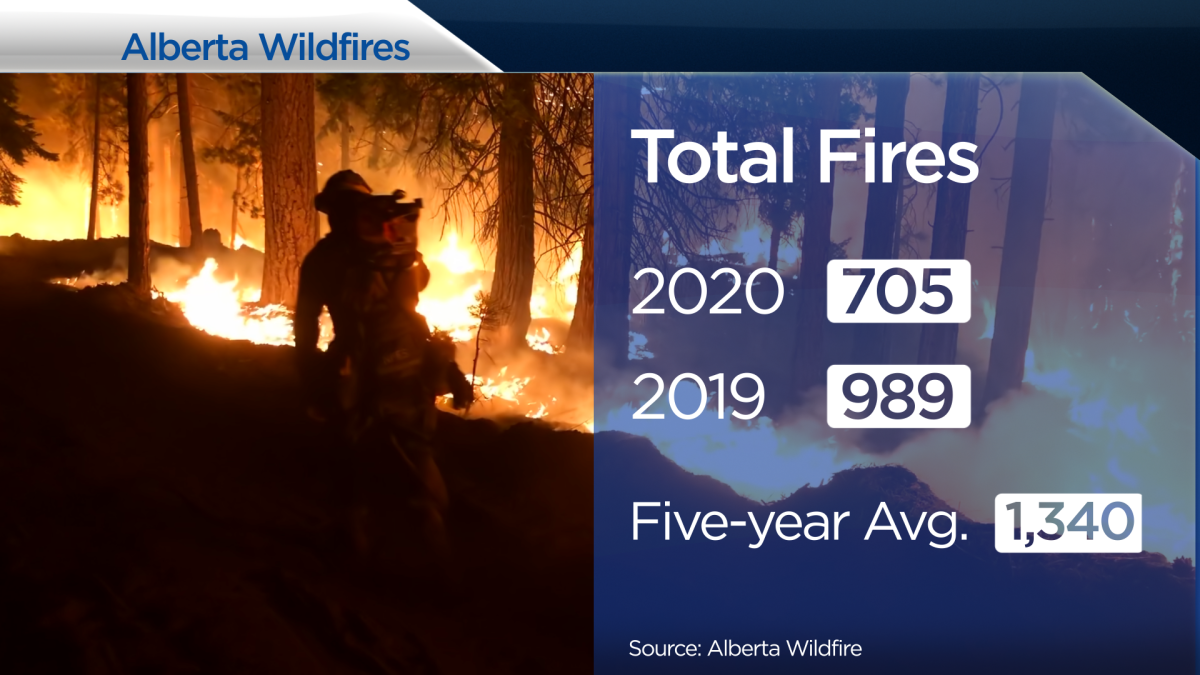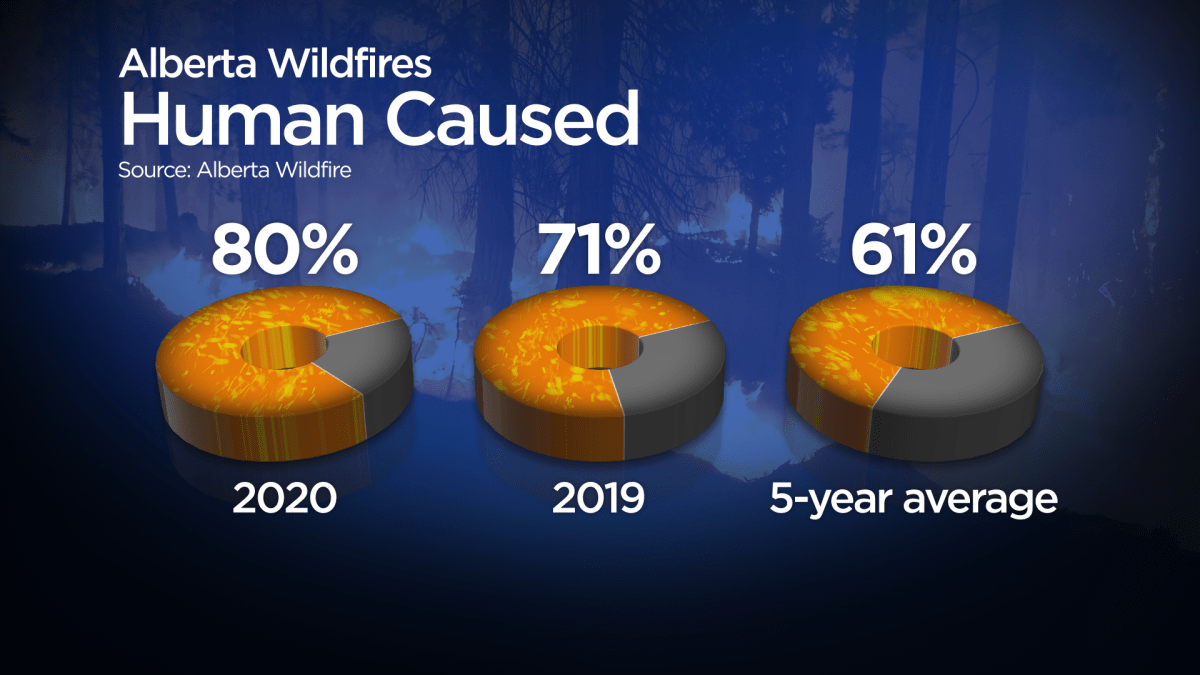Alberta is coming off of back to back years of dramatically different wildfire seasons. With the 2020 wildfire season now over, experts are analyzing data from one of the slowest years on record.

As researchers look at the reasons behind the slow year, the weather is the main factor, but what impact the COVID-19 pandemic had on the lack of fires is also something that can’t be ignored.
Back in 2019, just under 900,000 hectares of land and forest was burned by wildfires, breaking a record for the most land burned — which was set in 1981 — early on in the season, in July.
As of Nov. 2, 2020, 705 fires had burned a total of 3,265 hectares across all of Alberta.
That, compared to the five-year average of 1,329 blazes and 410,637 hectares being burned, is a big contrast.
“In terms of area burned, it’s one of the quietest years on record,” Mike Flannigan, professor of wildland fire at the University of Alberta, said of the 2020 wildfire season.
Looking back to the spring — particularly May, the month that typically keeps Alberta wildland firefighters the busiest — experts say this year’s wet and rainy season is the main reason behind fewer fires.
By June of this year, 300 fires had burned just about 450 hectares, compared to the previous year when 650,000 hectares had burned by June.
“We have had some rainy weather in the spring, and that carried on through a good portion of June and July, and that’s when we see the majority of our wildfires in the province, especially our most impactful wildfires,” Alberta Wildfire information officer Travis Fairweather said.
This year’s most significant fire was the late-season Devil’s Head Fire, which sparked in September and burned more than 2,400 hectares west of Calgary.

Get daily National news
Fairweather said that’s still a large blaze, and “quite a lot of area burned,” but compared to 2019’s Chuckegg Creek fire — which burned 334,772 hectares of land — and the McMillan Complex fire near Slave Lake — which saw 275,000 hectares burn — it’s small on the overall scale.
“This year, both the number of wildfires we’ve had and the area burned are both pretty historically low,” he said.
“I believe in terms of the area burned it’s the fewest since 1997, and probably the sixth fewest, overall.”
The discrepancy could be even higher, Fairweather said, as wildfire data tracking changed in the early 2000s, and fires that once were included in the totals aren’t anymore.
What about the pandemic?
While experts are pointing to weather as the main reason fewer wildfires started in 2020, it’s also impossible to wonder whether the pandemic and related restrictions had an impact.
Along with the fact that in early spring — when the wildfire season is typically busy — most people were isolating at home, a fire ban was also instated for the province in April.

Flannigan said in Alberta, “we have a lot of people working, living, recreating in the woods — ATVs campfires, more people in the woods than many than other jurisdictions across Canada,” but this year, far less of that was happening in the spring.
“How much did COVID-19 play? How much did weather play? I actually have colleagues who are trying to get a handle on that,” Flannigan said.
Fairweather agreed it’s “impossible” to say what the full impact of the pandemic was.
“Certainly, we expect that statistics will show more people were staying at home, less people were out using the forest for recreational purposes,” he said.
“But also, when people were able to leave their homes, some of the few options available to them was to go out camping, to go spend that time out in the woods, so certainly the statistics could show that as well.”
Fewer fires, but more caused by humans
Even though this was one of the slowest fire seasons on record, 2020 was a year that actually saw more fires sparked because of human activity.
Alberta’s five-year average suggests 60 per cent of the province’s wildfires are caused by humans and in 2019, that number was at 71 per cent.
“This year we’ve seen about 80 per cent of them have been human caused, and that number is quite a bit higher,” Fairweather said.
Of the — hectares that burned in 2020, the majority of it was part of the Devil’s Head fire, which investigators determined was caused by an abandoned campfire.
“Certainly, whenever we’re talking about human-caused wildfires, those are 100 per cent preventable,” Fairweather said.
Wildfire seasons are “like a pendulum,” and often even out as years pass, and considering both the weather and the realities of the pandemic are extremely unpredictable, both experts agree Albertans will have to wait and see what might be in store for the 2021 fire season.
Alberta’s wildfire season runs from March 1 to Oct. 31 each year.







Comments